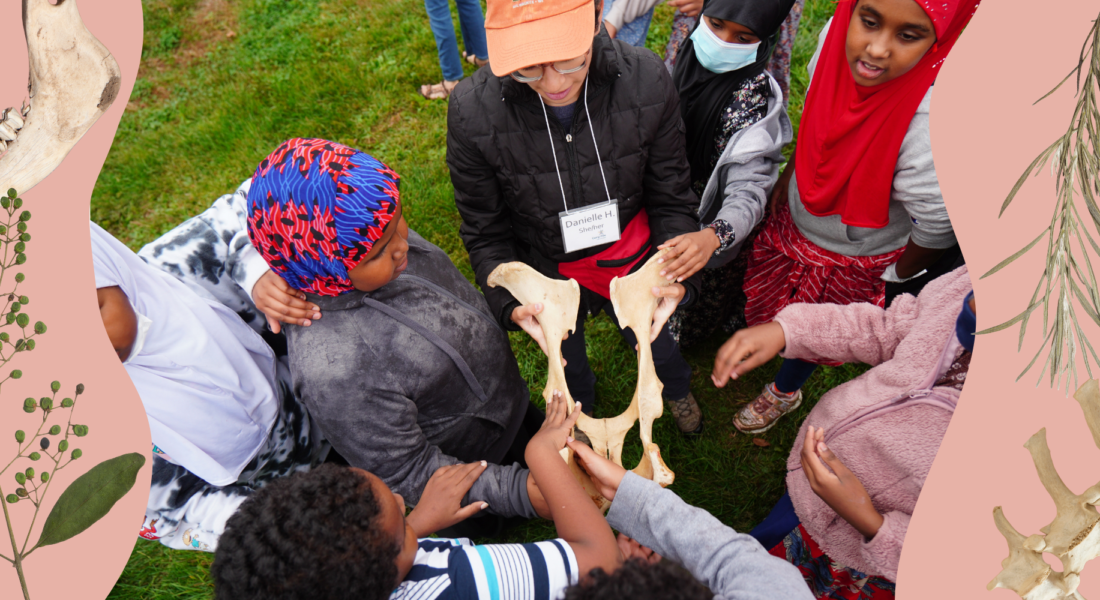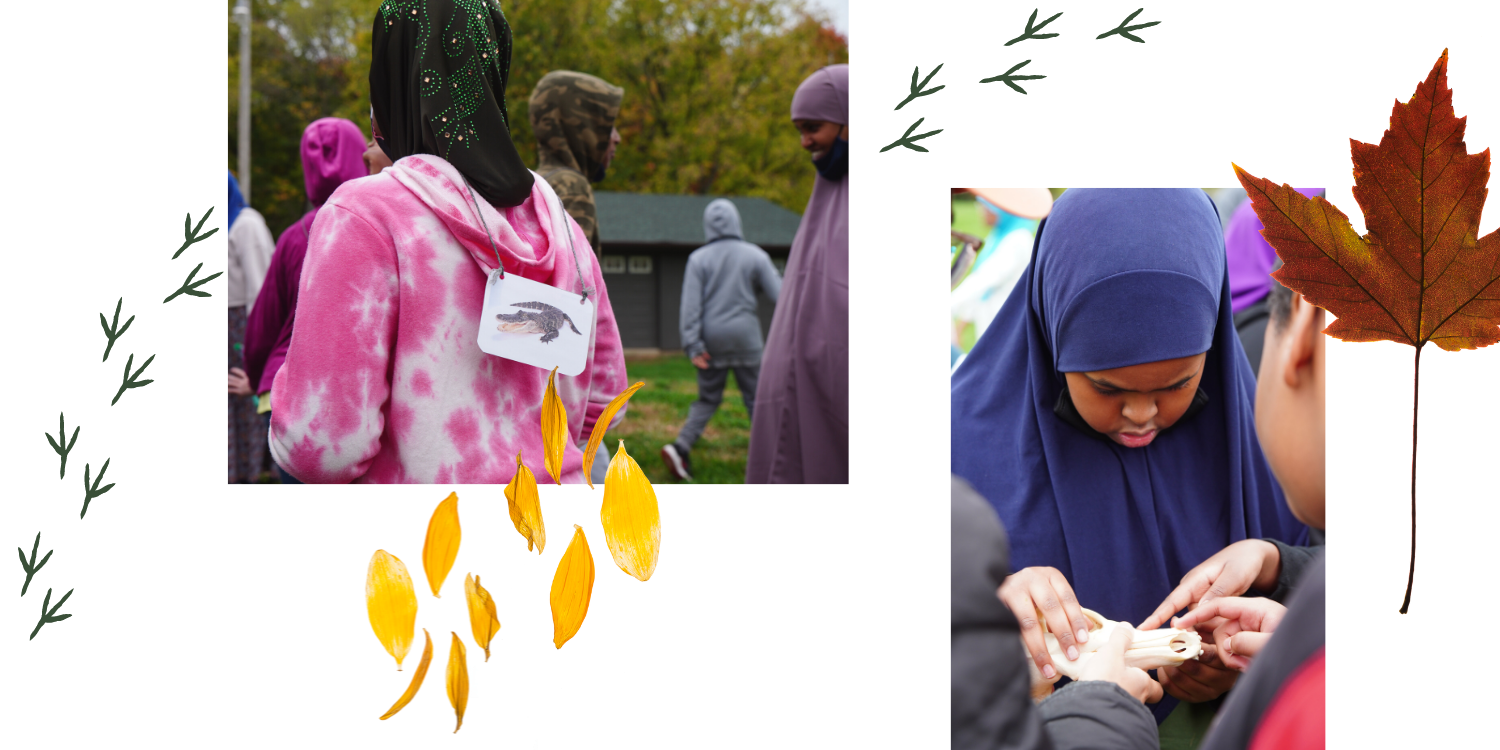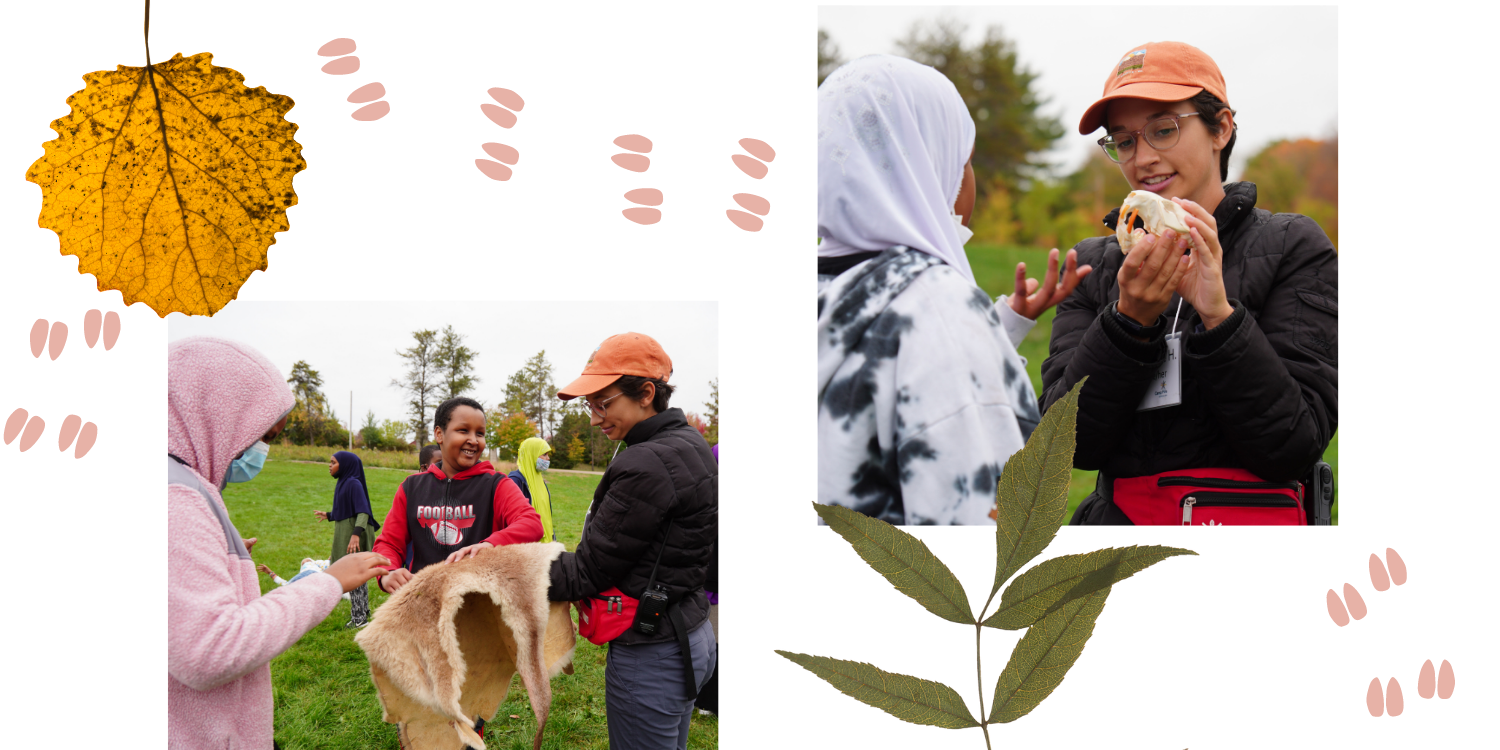“Is it a water animal?”
“Does it howl?”
“Does it walk on two legs or four?”
Students from the Twin Cities International School wander around the Front 40 acres at Tanadoona, trying to identify what animal is hidden behind their back. They’re able to ask yes or no questions to find out what features their creature has. As they take more guesses, they start to discover how their animal has adapted certain characteristics to help it survive.
Through Animal Adaptations & Populations youth become wildlife detectives by exploring a variety of animal bones and furs; and learn about the different adaptations associated with them. They also spend time learning about populations, and how predator/prey relationships and human impact can change them.
Fur, flippers, fangs, or feathers
Students gather around Camp Fire naturalists, eager to look at the items they’ve brought out to explore. Scattered in the field are laminated cards with different animals on them, each relating to one of the bones, furs, or feathers they’ll be examining. As they view the skull in the naturalist’s hands, they start to make deductions on what kind of creature it could be from. Long orange front teeth, a small head, and flat teeth in the back. Once they have their guess, they run out into the field to find which card matches the skull. A unanimous vote for the North American Beaver.
Getting the animal right is only half the assignment, students are encouraged to explain how they knew based on the animal’s characteristics.
“It has different teeth from the coyote skull,” one student shared. “So, it must have a different diet.”
The students learn that even the beaver’s orange teeth are an adaptation that reflects the iron-rich foods it eats, which enables the teeth to stay sharp so beavers can build dams and lodges, and survive in their environment.
They feel furs and feathers, learning how each helps the animal it belongs to survive.
“It’s so soft, I love it!” one student says as she gently pets a lynx fur. “I wish I had fur like this.”
Many of these students are from warmer countries, and some of them are experiencing Minnesota seasons for the first time. They learn how some of the creatures native to Minnesota have adapted to survive in harsh winter conditions. They compare animal adaptations to those that humans have adopted. Winter parkas are like the lynx’s thick fur, and beavers insulating their dams are like turning on the heat in our homes.
Adapting to the changing world
At the end of these lessons’, students reflect on some of the animals they’ve learned about. They also take time to reflect on how humans can impact the survival of these species.
“I like to watch the deer that come into my yard,” shared one student. “But I feel sad for them because they don’t have enough of their environment to live in.”
Students who learn through Camp Fire programing develop self and social awareness and are more conscious of how their own actions can change the world around them.
Young people participating in Animal Adaptions & Populations meet SEL and STEM competencies by making observations of plants and animals. They can then compare the diversity of life in different habitats, and develop a simple model based on evidence to represent how plants or animals use their adaptations to help them survive. Students will be able to construct an argument with evidence that evaluates how organisms can survive in a particular habitat, analyze or support an argument that traits can be influenced by different environments, and evaluate the merit of a solution to a problem caused by changes in plant and animal populations because of environmental changes. They will also analyze and interpret data to provide evidence for the effects of resource availability on organisms in an ecosystem.
Get a preview of this popular Field Trip lesson through My Nature Connection and a Nature Detective video from Camp Fire Naturalists.


